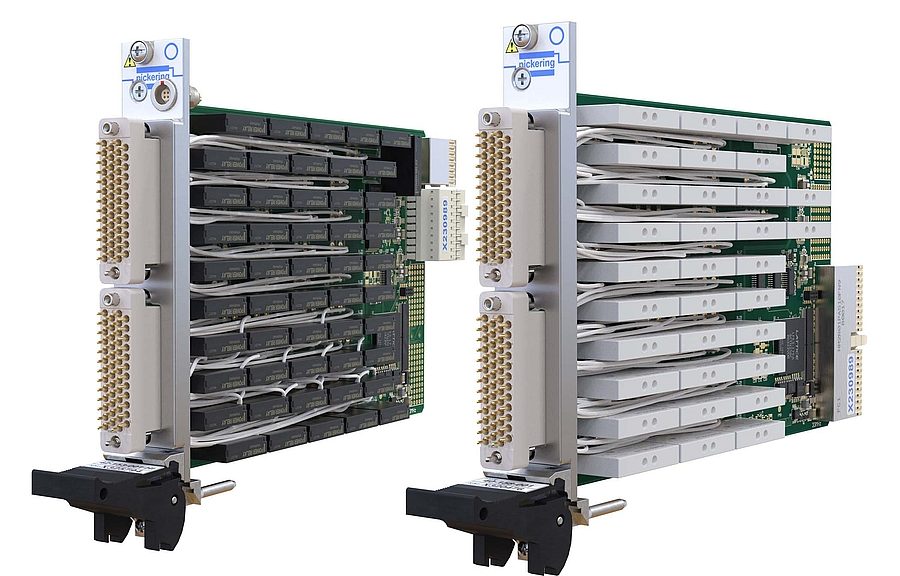- Pickering Interfaces, a provider of modular switching and signal simulation solutions for electronic test and validation, is expanding its offering of switch modules in PXI and PXIe formats with two new families of 5-amp power relay modules.
- The high-density 40/42-153 and 40/42-158 series modules, which can switch 1250 VA hot, feature low path and thermal offset resistances.
The 40/42-153 and 40/42-158 power relay modules are designed for switching large AC or DC loads or controlling large external relays, contactors and solenoids. They are available in several configurations up to 50 SPST (Single Pole Single Throw) (-153) or 32 SPDT (Single Pole Double Throw) (-158) relays.
According to Pickering, these PXI format switch modules are the densest available on the market. They have twice the number of channels as competitive modules.
These new PXI/PXIe power relay module families, which expand Pickering’s 5A switch module line, operate EMRs and support a variety of power test requirements.
The 40/42-153 family features 18, 25, 36 or 50 SPST relays, while the 40/42-158 series offers 8, 16, 24 or 32 SPDT relay versions. They can hot-switch inductive/capacitive loads up to 5 A at 250 VAC at a maximum power of 150W/1250VA (-153) or 175W/1250VA (-158). Their cold switching performance reaches up to 400VDC / 250VAC peak.
These new power relay modules have a path resistance of less than 35 mΩ with a thermal offset of 3 μV (typical). Their typical bandwidths are 65 MHz (-153) and 100 MHz (-158) at -3dB.
All versions are available with an optional hardware latch that, when activated, returns all fully functional relays to the default non-powered (open) state. The lockout state is also monitored by the control software and will inform the user when attempting to operate relays when the lockout is activated. This feature is particularly useful when relay operation must be prevented until specific hardware conditions occur. In addition, hardware interlock can be used as a functional stop to de-energize relays.
“The new PXI/PXIe 40/42-153 and 40/42-158 power relay module families have been designed to maximize the switch’s payload while minimizing the physical footprint and maintaining performance,” comments Steve Edwards, switch product manager at Pickering. “The single-slot footprint, available with either a PXI or PXIe control interface, provides more flexibility in chassis selection and minimizes the number of slots needed in PXI, PXIe or LXI chassis. ”
Partially populated options are available to duplicate the front panel connector interface and pinout of existing Pickering 5A products. This facilitates the transition to a PXIe control interface. VISA, IVI & Kernel drivers are provided to operate under Windows.
These PXI/PXIe power relay modules come with a three-year warranty and a spare relay on each module to allow qualified customers to perform field repairs themselves.






